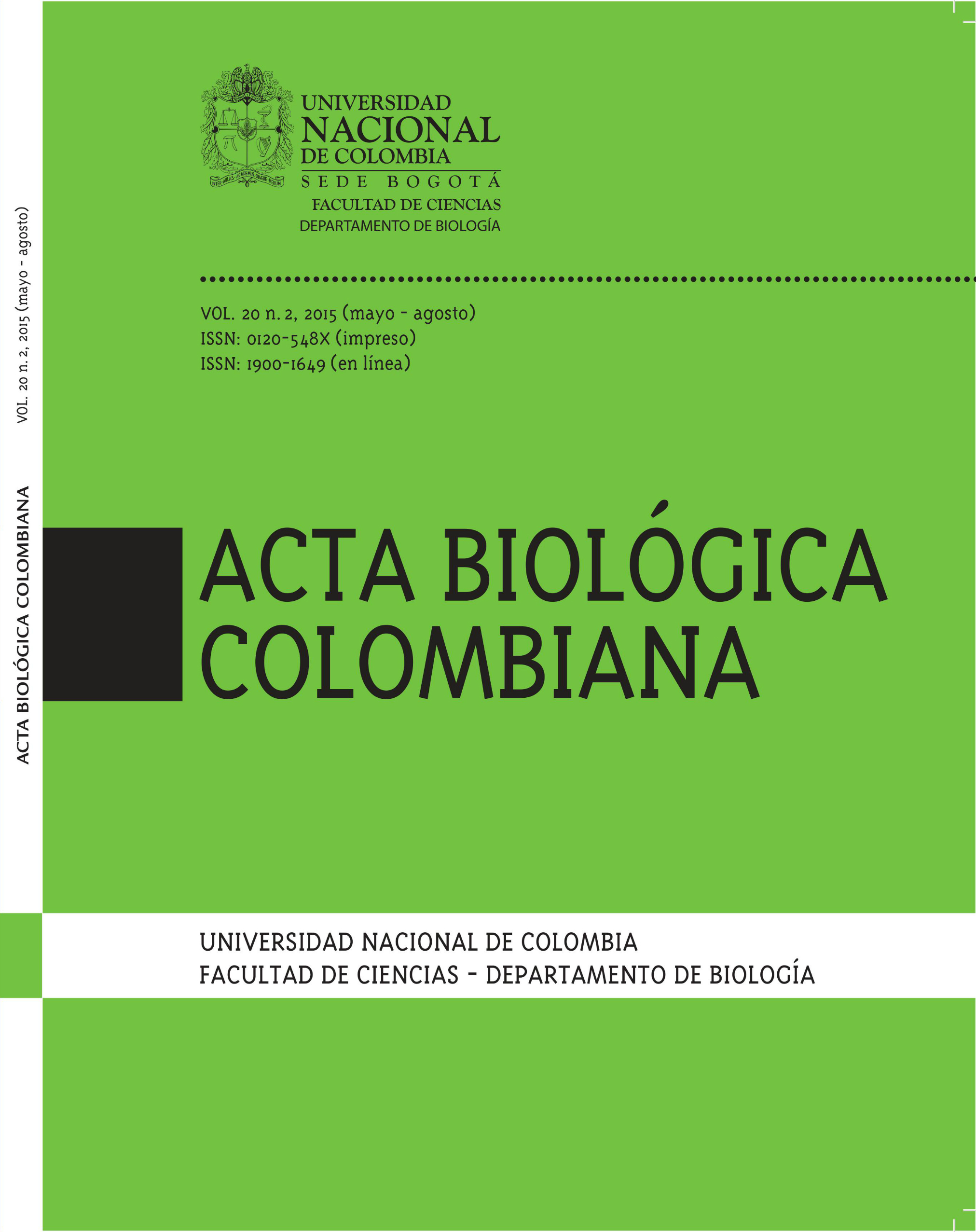Formación de embriones somáticos a partir de semillas inmaduras en Sorghum bicolor variedad CIAP 132-R
DOI:
https://doi.org/10.15446/abc.v20n1.42303Keywords:
2,4-D, 6-BAP, callos, embriogénesis somática, sorgo. (es)Downloads
Existen varios protocolos de regeneración de plantas vía embriogénesis somática de Sorghum bicolor (L.) Moench, sin embargo los porcentajes de formación de callos con estructuras embriogénicas y regeneración de plantas son bajos. Es por ello que esta investigación tuvo como objetivo generar embriones somáticos en sorgo rojo variedad CIAP 132-R. Se ensayaron diferentes concentraciones de 2,4-D para la formación de callos, así como tres concentraciones de ácido ascórbico para eliminar la exudación de compuestos fenólicos por el explante. También para la formación de los embriones somáticos a partir de los callos se evaluaron diferentes concentraciones de 2,4-D y 6-BAP. El mayor porcentaje de formación de callos (57.5 %) se alcanzó con 18.1 µM de 2,4-D. Con la adición al medio de cultivo de 50.0 mg.l-1 de ácido ascórbico fue posible eliminar los compuestos fenólicos en el explante y en el medio de cultivo, además permitió incrementar el porcentaje de formación de callos con estructuras embriogénicas hasta un 95 %. El número mayor de embriones somáticos por callo se alcanzó en el medio de cultivo con concentraciones de 4,52 µM de 2,4-D, combinada con 2,22 µM de 6-BAP. Por primera vez, se logró la formación eficiente de embriones somáticos a partir de los callos obtenidos de semillas inmaduras germinadas como explante inicial en la variedad CIAP 132-R.
ABSTRACT
Several protocols of plant regeneration via somatic embryogenesis from Sorghum bicolor (L.) Moench have been development, however the percentage of calluses with embryogenic structures and plant regeneration are low. Therefore this study aimed to generate somatic embryos in red sorghum variety CIAP 132-R. Different concentrations of 2,4-D for callus formation, and three concentrations of ascorbic acid to remove phenolics exudation were assayed by explant. For the formation of embryos different concentrations of 2,4-D and 6-BAP were evaluated. The highest percentage of callus formation (57.5 %) was achieved with 18.1 µM 2,4-D. With the addition to the culture medium of 50.0 mg.l-1 of ascorbic acid was possible to eliminate the phenolic compounds in the explant and in the culture medium; also it allows increasing the percentage of calluses with embryogenic structures up to 95 %. The highest number of somatic embryos per callus was achieved with a reduction in the culture medium of 2,4-D to 4.52 µM in combination with 2.22 µM 6-BAP. For the first time, the efficiency of somatic embryo formation was obtained from the freshly germinated sprouts of immature seeds as initial explant CIAP 132-R.
How to Cite
APA
ACM
ACS
ABNT
Chicago
Harvard
IEEE
MLA
Turabian
Vancouver
Download Citation
License
Copyright (c) 2015 Acta Biológica Colombiana

This work is licensed under a Creative Commons Attribution 4.0 International License.
The acceptance of manuscripts by the Journal implies its electronic edition of open Access under Creative Commons Attribution License 4.0, and the inclusion and diffusion of the complete text through the institutional repository of the Universidad Nacional de Colombia and in all the specialized data bases that the editor considers adequate for its indexation to increase Journal visibility.
Acta Biológica Colombiana allows authors to archive, download and distribute the final published version, as well as pre-print and post-print versions including a header with the bibliographic reference of published article. The journal encourages the authors to distribute the final versión through Internet, for example in their personal or institutional web pages, and scientific social networks.






















